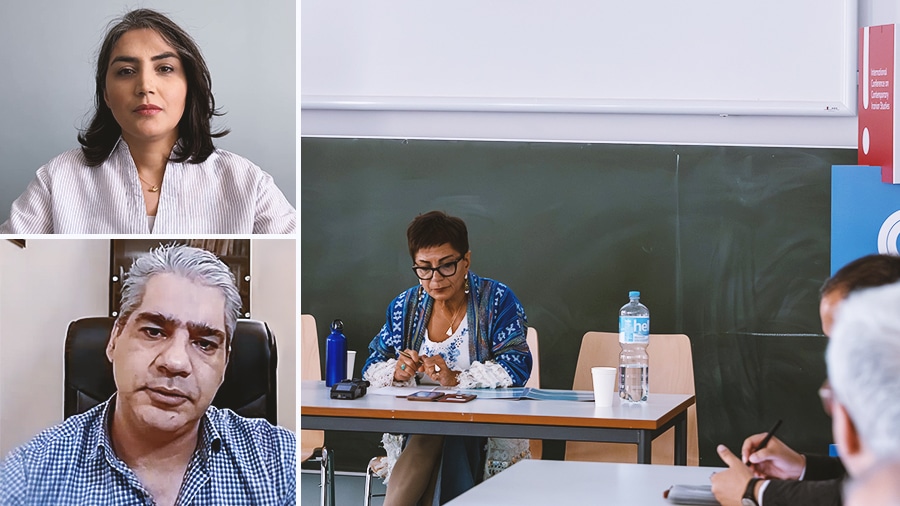Abbas Kazemi
Genealogy of the Iranian Women’s Movement (From the Constitutional Revolution to the Islamic Revolution)
Mahsa Nejat
Analysis of the Discourse “Ecofeminism in Contemporary Iranian Art” During the 80s and 90s
Moderator: Mansoureh Shojaee
The panel explores two critical aspects of Iranian feminist and environmental discourse: the historical evolution of women’s movements in Iran and the rise of ecofeminism in contemporary Iranian art.
Abbas Kazemi’s presentation examines the typology of Iranian women’s movements from the Constitutional Revolution to the Islamic Revolution. This analysis addresses the polarized interpretations of the women’s rights movement in Iran, which range from diminishing it to a mere social issue to attributing significant power and influence to it.
Kazemi seeks a balanced perspective using the sociological frameworks of Joseph Gusfield and Alberto Melucci, presenting Iran’s women’s movement as a fluid, rather than linear, phenomenon. Based on qualitative historical analysis, Kazemi argues that sociopolitical obstacles, including limited societal development and governmental intolerance, have prevented a strong, unified women’s movement.
Instead, progress in women’s rights has largely resulted from incremental, everyday interactions rather than structured activism. The research also critiques the perceived liberalism of Mehdi Bazargan’s interim government after the 1979 Revolution, arguing that Bazargan’s administration enacted policies that restricted women’s freedoms, especially in response to mandatory hijab protests.
Mahsa Nejat’s paper delves into the ecofeminist discourse within Iranian contemporary art from the 1980s and 1990s, a period marked by political reform and greater international engagement under the discourse of “Dialogue Among Civilizations.” This era saw an increase in non-governmental organizations and a more open discussion on feminist and environmental issues within Iran’s art and cultural spaces.
As Iranian society became more aware of environmental issues, ecofeminism emerged as a potent movement connecting women’s issues with environmental degradation. Nejat explores the symbolic connection in ecofeminism between “woman,” “earth,” and “environment,” with each representing oppression under a patriarchal, modernist worldview.
This viewpoint suggests that the exploitation of nature mirrors the systemic oppression of women. During the 1980s and 1990s, artists in Iran increasingly incorporated ecofeminist themes, creating works that highlighted the parallel between environmental harm and the exploitation of women’s bodies.
Projects like “Children of Blue, Black Sky” (1999) and the “Tehran Monoxide Project” (2012) exemplify this shift, providing a platform for feminist and environmental critiques in contemporary Iranian art.
Through discourse analysis, Nejat’s study examines how the dominant and marginalized narratives of feminism, environmentalism, and postmodernism in Iran’s reformist context intersect to produce ecofeminist art, emphasizing the growing representation of women artists in Iran’s cultural landscape.


